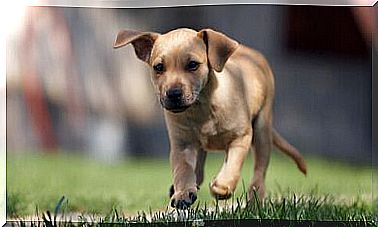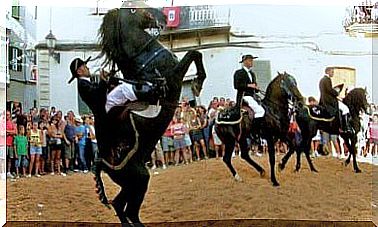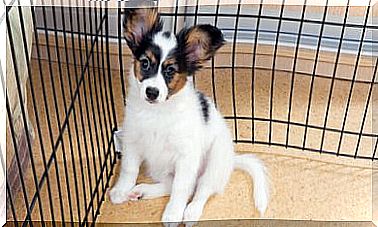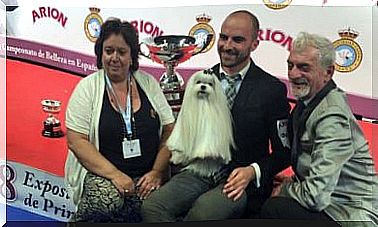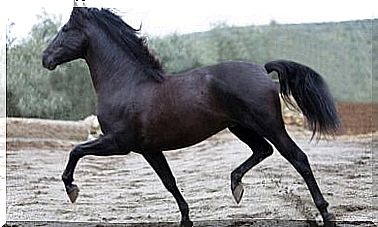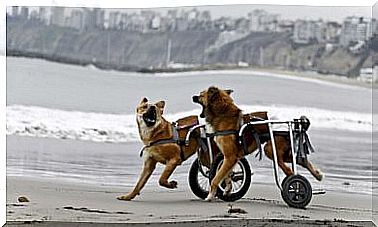Brachycephalic Syndrome: Causes, Symptoms And Treatment

Many people who love dogs prefer ones with a flat face. The folds in the face make them even more tender. Therefore, these dogs have a growing number of fans in cities around the world. Some of the pets with these characteristics often suffer from brachycephalic syndrome.
What is a brachycephalic dog?
This complicated term is used to refer to dogs with a flattened muzzle. They have the following characteristics:
- broad skull
- flat face
- Short muzzle compared to other dogs
- Due to the above feature, they have shorter nasal bones.
- very small nostrils
The brachycephalic races
- boston terrier
- Boxer
- english bulldog
- French bulldog
- Lhasa Apso
- Maltese
- mastiff
- Pekingese
- Pug Carlino
- St Bernard
- Shih Tzu
- yorkshire terrier

No race had these characteristics naturally. Human beings have been “creating” them according to their aesthetic or utilitarian criteria, such as sales and marketing. All of these breeds are more likely to suffer from brachycephalic syndrome.
What is brachycephalic syndrome?
Brachycephalic syndrome is the set of anatomical anomalies suffered by dogs with flattened faces. This syndrome leads to a variety of respiratory problems.
Although some breeds are predisposed to suffer from the problem, that doesn’t mean that all dogs develop it.
Brachycephalic syndrome is produced by different pathologies:
- Soft palate. It’s one that stretches longer than normal. This stretch blocks the airway.
- Abnormalities in the pharynx. The shape of the organs and tissues that go from the nose to the throat causes problems in their functioning. These anomalies can cause obstruction of the air passage to the trachea.
- Narrow nostrils. They prevent the dog from breathing through the nose.
In summary, the pathologies that characterize brachycephalic syndrome prevent dogs from breathing properly.
The Importance of Breathing for Dogs
All living things need to breathe to supply the body with oxygen. In the case of dogs, this is a way to regulate their body temperature, as dogs don’t sweat. In fact, dogs sweat a little through their paw pads, but that’s not enough.
The act of panting is rapid, shallow breathing. During the panting period, the evaporation of water from the dog’s tongue is faster. This occurs in the upper respiratory tract, the part of the body that helps regulate an animal’s body temperature.
This important process is affected when the dog suffers from brachycephalic syndrome. If he does not breathe properly, he may experience a hot flash. When this happens, the body’s cells die quickly. Also, the brain can swell and lead to seizures. The digestive system can run out of blood supply, causing ulcers to develop. The kidneys can also suffer irreversible damage. All this in less than an hour.
When you have a brachycephalic dog, you need to know their breathing patterns, as they have more difficulty breathing than other breeds.
Prevention of respiratory problems
Although there are difficult problems to avoid when you have a brachycephalic dog, there are some rules to follow:
Investigate the dog’s genetic line
Before acquiring a dog of a breed predisposed to suffer from brachycephalic syndrome, it is necessary to investigate its past. It is best to look for a responsible and trustworthy breeder who will ensure that the pet is descended from healthy parents.

Take care of the ambient temperature
Brachycephalic dogs should avoid exercising during the hottest hours of the day. Also, they should be hydrated with plenty of water during the summer.
Moderate diet and exercise
Brachycephalic dogs must eat properly and exercise regularly, as being overweight makes it even more difficult to breathe.
When to look for the vet?
There are some symptoms to watch out for. If they occur, go to the specialist:
- Noises when breathing
- snoring in sleep
- Irregular or disordered breathing during sleep
- Increased breathless periods
- fainting
Treatment
When the veterinarian diagnoses a dog with brachycephalic syndrome, there are different types of treatment:
- Surgery. With this procedure, it is possible to widen the dog’s nostrils or shorten the palate. It is also possible to remove the remaining tissue.
- Administration of medications. Anti-inflammatory steroids, cough medicine and bronchodilators. These remedies are not able to completely solve the problem, but they can help in a crisis.
